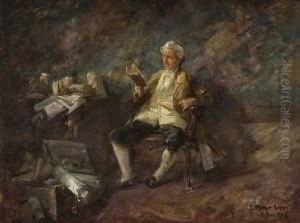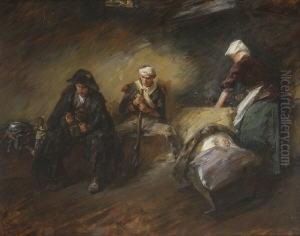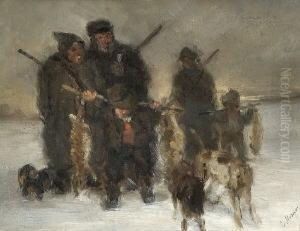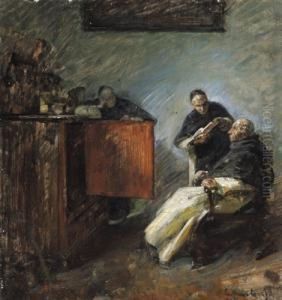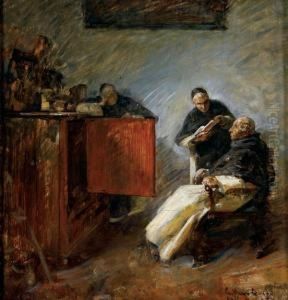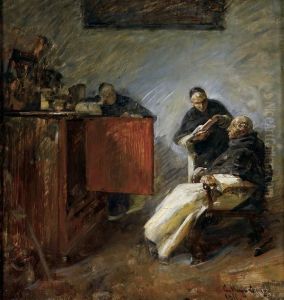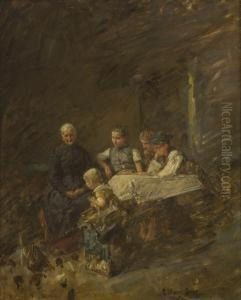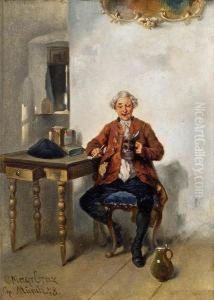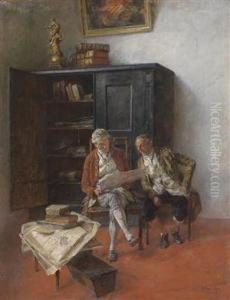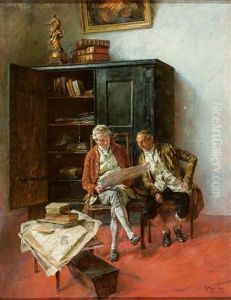Karl Mayr-Graetz Paintings
Karl Mayr-Graetz, born in 1868, was an Austrian painter and graphic artist known for his Art Nouveau and Symbolist style. His work is characterized by a strong decorative sense and often features allegorical and mythological subjects. Mayr-Graetz's art was part of the larger European fin-de-siècle movement that included artists who sought to convey the spiritual, emotional, and psychological through their work.
Despite being less well-known than some of his contemporaries, Mayr-Graetz made a significant contribution to the art world during his time. He studied at the Academy of Fine Arts Vienna, which was a breeding ground for many notable artists of the period. His education there would have exposed him to the academic traditions of painting, which he later blended with more modern stylistic elements.
Karl Mayr-Graetz's career was marked by his participation in various exhibitions and his associations with other artists. He was active in artistic circles where the cross-pollination of ideas was common, contributing to the vibrant and innovative atmosphere that defined the turn of the century in Vienna. His works were exhibited alongside those of other artists, and he was a part of the cultural fabric of the Austro-Hungarian Empire's capital, which was a hub for music, literature, and visual arts.
Unfortunately, like many artists of his era, Mayr-Graetz did not achieve widespread fame during his lifetime, and his work was somewhat overshadowed by more prominent figures in the Art Nouveau movement, such as Gustav Klimt. Nonetheless, his paintings and graphics remain a testament to the rich artistic environment of early 20th-century Vienna. Mayr-Graetz passed away in 1924, leaving behind a body of work that, while not extensive, is appreciated for its contribution to the Symbolist and Art Nouveau movements.
